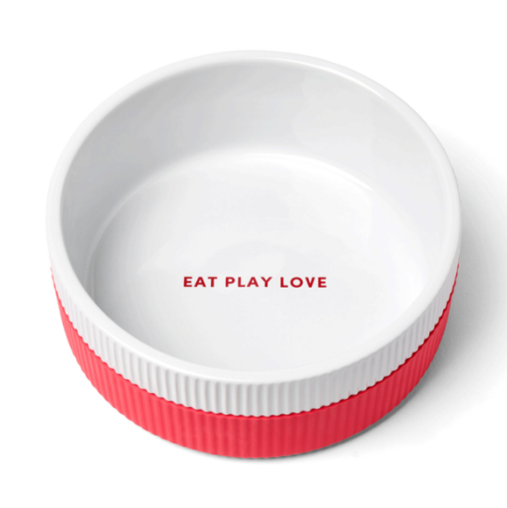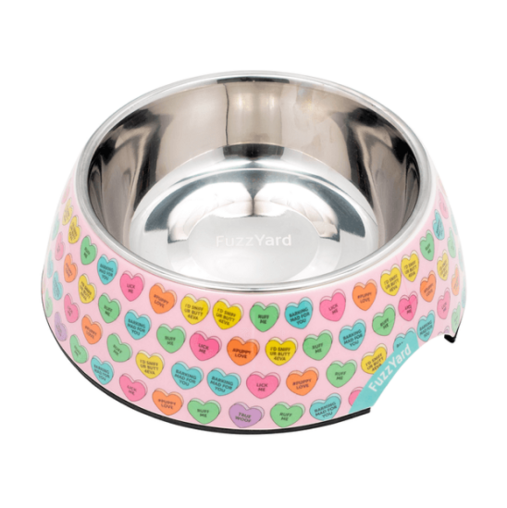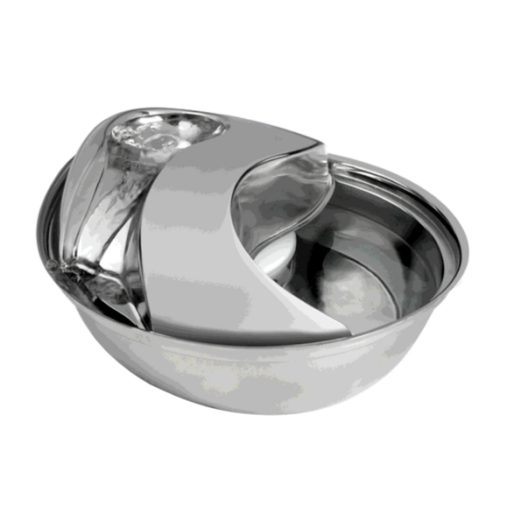Last Updated: 06/05/2025
Author: Dr Gillian Hill BVSc (Hons)
Reading Time: 30 minutes - long read
Many pet owners underestimate the importance of keeping their dog's water bowl clean. However, neglecting this simple task can lead to a build-up of harmful bacteria and algae, which can cause serious health problems in your furry friend. From gastrointestinal issues and skin irritation to severe poisoning, these are problems no pet owner wants to encounter.
Just imagine finding your energetic companion lethargic or your always-hungry hound refusing meals. These unsettling signs can be the result of something as seemingly benign as a dirty water bowl.
Algae, particularly blue-green algae, can be toxic, sometimes even fatal for dogs. Bacteria too can lead to illnesses that may leave you in distress and your pet in discomfort.
Fortunately, there are straightforward steps you can take to ensure your dog's water bowl remains a safe place for them to hydrate.
From choosing the right type of bowl to developing a consistent cleaning routine, this article will guide you through the process of keeping your dog's water bowl clean, helping you maintain your pet's health and happiness.
In This Article
What Are The Risks Of Having A Dirty Dog Water Bowl?
Understanding The Basics Of Dog Water Bowl Care
How To Clean Your Dog's Water Bowl
What Are The Risks Of Having A Dirty Dog Water Bowl?
Before diving into the specific steps you can take to keep your dog's water bowl clean, it's crucial to understand the risks posed by bacteria and algae. Bacteria are microorganisms that can proliferate rapidly in a water bowl, particularly if the bowl is not cleaned regularly.
There are numerous types of bacteria, some of which can cause diseases in dogs, including salmonella and E. coli. These bacteria can lead to various health problems, such as diarrhoea, vomiting, loss of appetite, weight loss, and even more serious conditions like kidney damage.
Algae, on the other hand, are plant-like organisms that thrive in moist environments. They can grow in your dog's water bowl and can appear as a green slime, often visible to the naked eye. Of particular concern is the blue-green algae, also known as cyanobacteria, which can be deadly to dogs.
The toxins released by this type of algae can cause a variety of symptoms, ranging from skin and eye irritation to severe neurological and liver damage. Ingesting water contaminated with blue-green algae can be fatal to dogs.
Recognising the signs and symptoms of bacterial and algae-related illnesses in dogs is crucial for any dog owner. Symptoms can range from mild to severe and typically include diarrhoea, vomiting, loss of appetite, lethargy, and excessive drooling.
In the case of blue-green algae poisoning, symptoms can be even more severe, such as difficulty breathing, seizures, disorientation, and unconsciousness. These symptoms can appear as quickly as 15 minutes after exposure and may lead to death if not treated promptly. Understanding these risks underscores the importance of maintaining a clean water bowl for your dog.
Understanding The Basics Of Dog Water Bowl Care
Choosing The Right Type Of Water Bowl For Your Dog
Choosing the right type of bowl for your dog's water is a fundamental step in ensuring the safety and cleanliness of your pet's drinking supply. Ceramic and stainless steel bowls are typically recommended over plastic for several reasons.
Both ceramic dog bowls and stainless steel bowls are non-porous, meaning they do not absorb or retain harmful bacteria like plastic bowls can. Moreover, these materials resist the growth of algae, providing a more hygienic environment for your dog's drinking water.
Plastic bowls, on the other hand, can develop scratches over time, creating small spaces where bacteria and algae can thrive. Additionally, certain types of plastic may release harmful chemicals, posing another potential risk to your dog's health.
Changing Water Daily
The importance of daily water changes cannot be overstated. Just like humans, dogs should have access to fresh, clean water every day. It is recommended to empty your dog's water bowl daily, rinse it out, and refill it with clean water.
This practice not only ensures that your dog is getting fresh water, but it also helps prevent the buildup of bacteria and algae in the bowl. By removing old, standing water, you're eliminating a potential breeding ground for these harmful organisms.
Regular Cleaning
Regular cleaning of your dog's water bowl is another essential part of maintaining a safe drinking environment for your pet. While daily water changes can help keep the bowl clean, it's also necessary to perform a more thorough cleaning on a regular basis.
It's recommended that you wash your dog's water bowl with warm water and soap at least once a week, or more frequently for bowls that are used outside or in humid conditions.
Scrubbing the bowl with a brush can help remove biofilm, a layer of microorganisms that can adhere to the sides of the bowl. This type of deep cleaning can help prevent the growth of bacteria and algae, ensuring that your dog's water supply remains clean and safe.

How To Clean Your Dog's Water Bowl
Cleaning a dog's water bowl properly requires more than just a quick rinse. The recommended sequence is to rinse the bowl with warm water first, wash it thoroughly with dish soap, scrub it to remove any hard-to-clean spots or residues, then rinse again and dry it completely before refilling.
This process helps to ensure any harmful bacteria or algae are thoroughly eliminated. For those with a dishwasher, you can use it to clean your dog's bowl, which can be a great time-saver.
However, not all bowls are dishwasher-safe, especially some plastic ones, and the dishwasher may not reach all areas of the bowl, especially if it has a unique shape.
If you're dealing with hard-to-remove residues, consider using vinegar or baking soda. These substances can help break down the residue and make it easier to remove. To use, add some vinegar or baking soda to the bowl, scrub thoroughly, then rinse well. Always follow manufacturer instructions and consider consulting your vet if you're unsure.
Preventing Algae and Bacteria Growth
The environment and weather conditions significantly influence the growth of algae and bacteria in your dog's water bowl.
Warm, damp environments are ideal for the proliferation of these microorganisms, meaning that your dog's water bowl could become a breeding ground during warmer months or in humid climates. This underscores the importance of keeping your dog's water bowl in a cool, dry place, which creates a less conducive environment for algae and bacteria to flourish.
By replacing your dog's water daily or even more frequently during hot weather, you ensure your dog has access to fresh, clean water at all times.
Consider a Water Fountain
If youâre short on time, or simply wish to keep your dogâs water as clean as possible, consider using a dog water fountain. Water fountains offer a continuous source of filtered, aerated water, and provide a constant stream of moving water which many dogs prefer, rather than standing water. Just like water bowls, fountains come in a variety of materials, and other factors to consider include the size and capacity of the fountain to match your dog's hydration needs, especially for larger dogs or multi-pet households.
Water fountains still require regular cleaning and filter replacement, but offer an easy way to provide clean, fresh water for your dog every day.
Seek Vet Advice If Your Dog Is Showing Symptoms
Recognising when to seek professional help is a key part of keeping your dog healthy. If, despite your best efforts, algae or bacteria persist in your dog's water bowl, or if your dog exhibits severe symptoms such as vomiting, diarrhea, weakness, or disorientation, it's time to consult a vet. They can help diagnose any potential illnesses in your dog and can provide further advice on tackling persistent contamination in your dog's bowl.
Your vet can also be a valuable resource when it comes to choosing specific cleaning products or strategies too. At Pet Circle we offer Vet Pet Plans and free online chats with staff vets that can help make recommendations for safe and effective disinfectants, or advice tailored to your particular climate and circumstances. Remember, your vet is your partner in ensuring your dog's health and happiness. Don't hesitate to seek their guidance when needed.
Easy To Clean Water Bowls
Ideal for over-zealous eaters, the Paws for Life Bowl is heavier than most bowls and has a non-slip base to help stop your dog sliding the bowl across the floor or toppling it over.

Ceramic is a hygienic material with a smooth finish that is easy to clean. Your pup will be dining in style with modern colours and patterns. Offering unique and sophisticated designs, Gummis feeding bowls are perfect for food or water.

The adorable range of bowls from Fuzzyard is available in a wide variety of colours and designs. Made from sturdy BPA-free melamine with removable stainless steel inserts, the innovative design makes clean-up easy and fuss-free

With its elegant shape and sparkling stainless steel, this pet fountain is easy to clean and maintain. It also comes with a replaceable charcoal filter and is dishwasher safe.
Further Reading
Want to read more? Check out our other articles:
Why Does My Dog Paw At Their Water Bowl?
Benefits of Slow Feeder Bowls For Pets